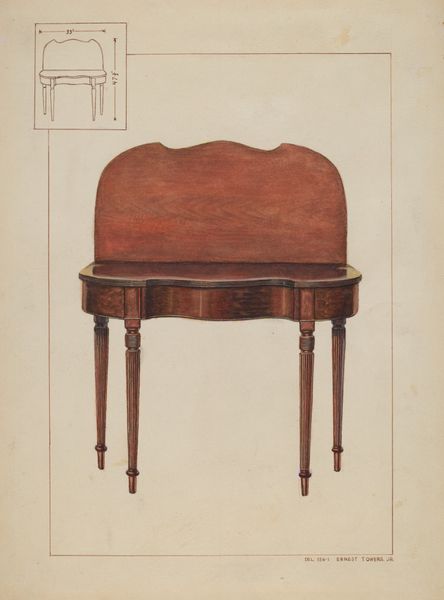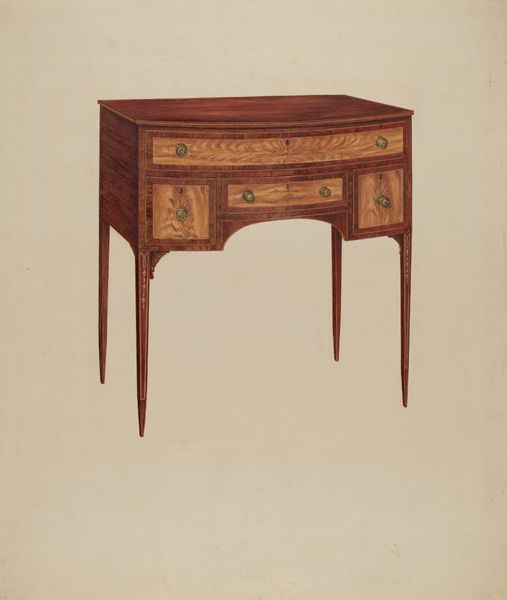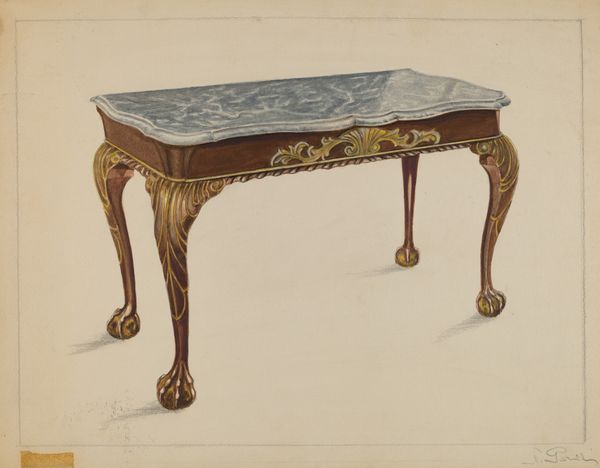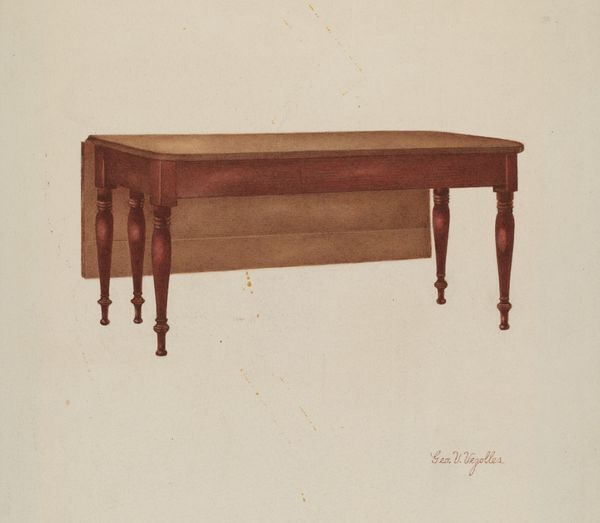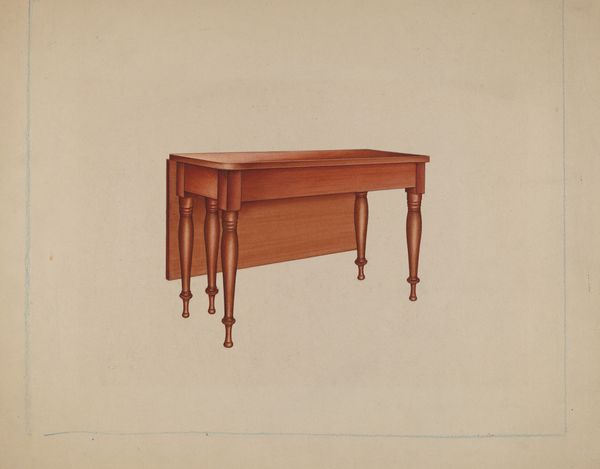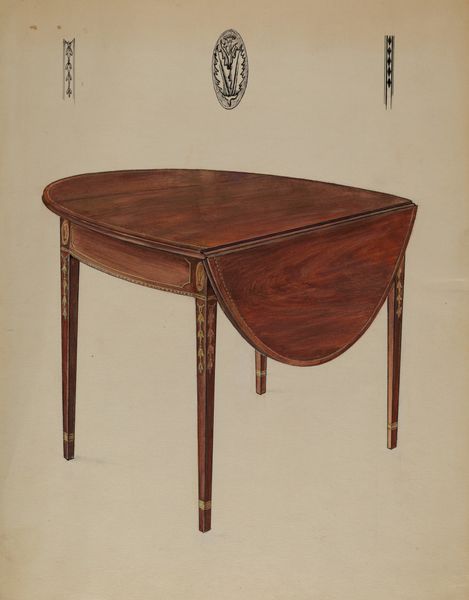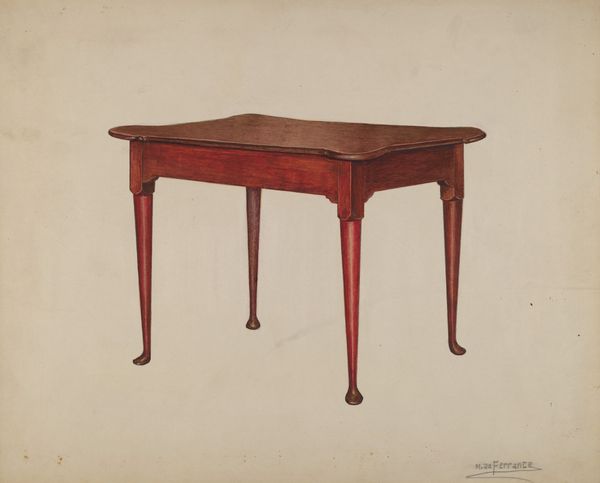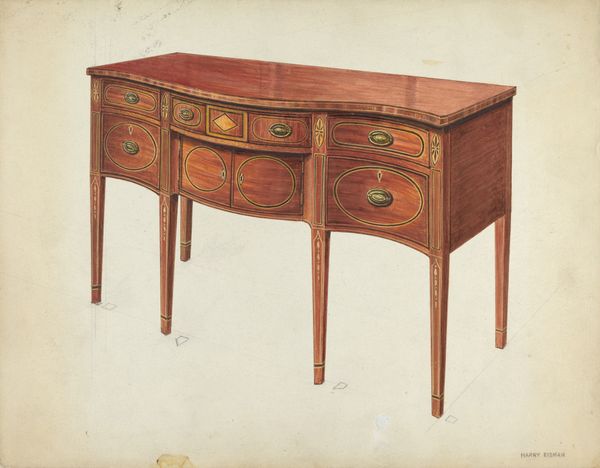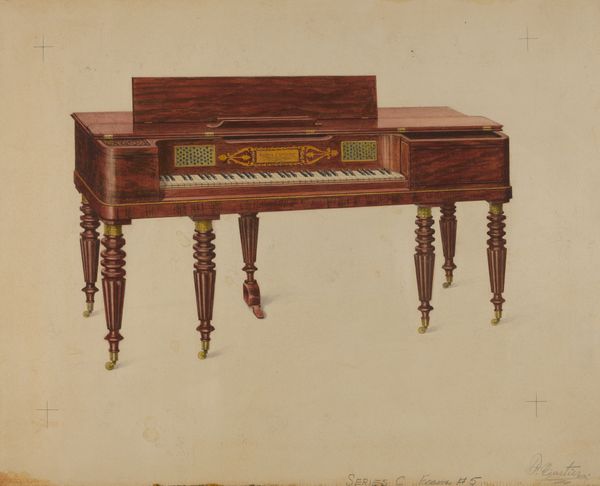
drawing, paper, pencil
#
drawing
#
paper
#
pencil
#
academic-art
#
decorative-art
#
watercolor
Dimensions: overall: 22.9 x 30 cm (9 x 11 13/16 in.) Original IAD Object: 28 1/2" high; 34 1/2" long; 36" in diameter
Copyright: National Gallery of Art: CC0 1.0
Curator: This lovely pencil and watercolor drawing on paper is titled "Card Table," and Florence Choate completed it around 1953. What strikes you about it? Editor: My immediate reaction is…restraint. It's quiet, formal, even a bit fragile with those attenuated legs. There's a stillness that almost verges on melancholy. Curator: Interesting observation! Given its date, the drawing likely comes from a period deeply affected by postwar austerity. Card games, often played among women in domestic spaces, became refuges of community in an era of societal reconstruction and constrained consumerism. The artist might be subtly referencing these gendered spaces. Editor: I see your point, but the design itself seems equally important. The artist carefully controls the application of tone and watercolor to describe volume, light, and shadow with maximum clarity. This detailed treatment gives the design a tangible sense of dimension despite its medium. What did she use it for? Curator: Records about Choate indicate it was for furniture production. Consider this artwork's place in design history; after the World War, as social roles were in flux, objects took on new symbolic weight as both commodities and cultural artifacts. Furniture designs reflect that, offering aesthetic solutions tied to emerging lifestyles and gender roles within the household. Editor: Indeed! Notice also how the design echoes a Neoclassical style, like a ghost from an earlier era. And that narrow rectangular inset to the side contains such careful decorative work with that stylized foliate emblem! So well-executed on a miniature scale. It certainly speaks of formal training in a structured system. Curator: Absolutely. By resurrecting an older design tradition, she perhaps also seeks to assert traditional roles in furniture making within an evolving sociopolitical framework. Choate, like so many of her time, lived with shifting definitions of production and craftsmanship. Her work then becomes an investigation of craft's evolving status and meaning within both manufacturing and personal spheres. Editor: Thinking on this detailed and understated presentation, I appreciate how it bridges functionality with thoughtful design choices. Thank you. Curator: Yes, and through understanding these layered contexts, we gain appreciation for the quiet but potent ways that even utilitarian design documents encapsulate far wider currents in culture.
Comments
No comments
Be the first to comment and join the conversation on the ultimate creative platform.


